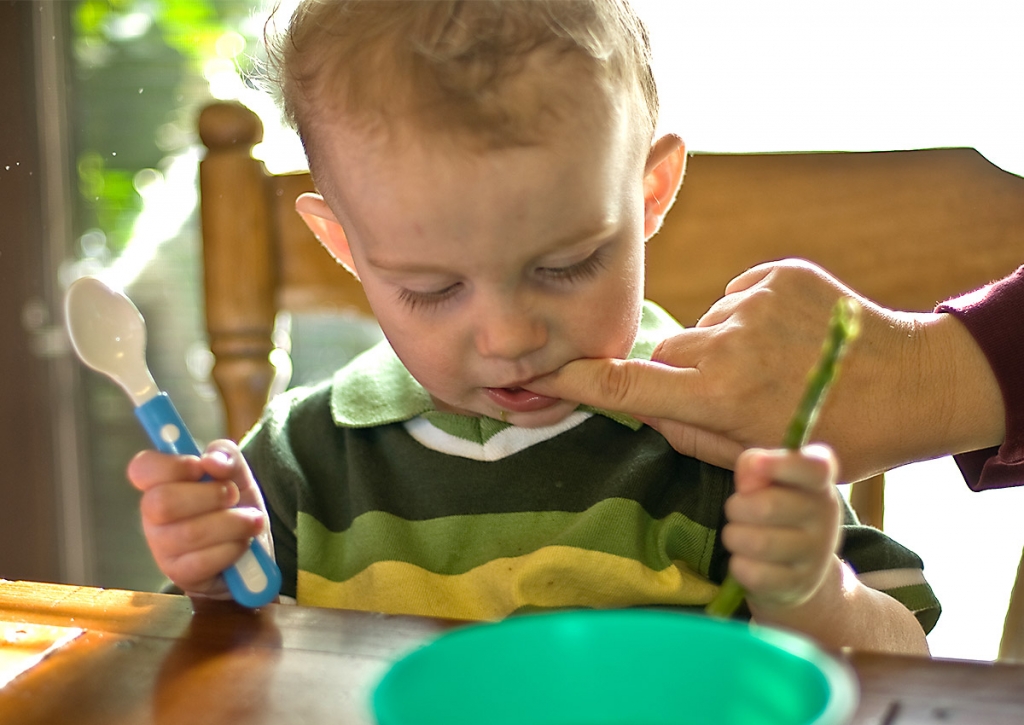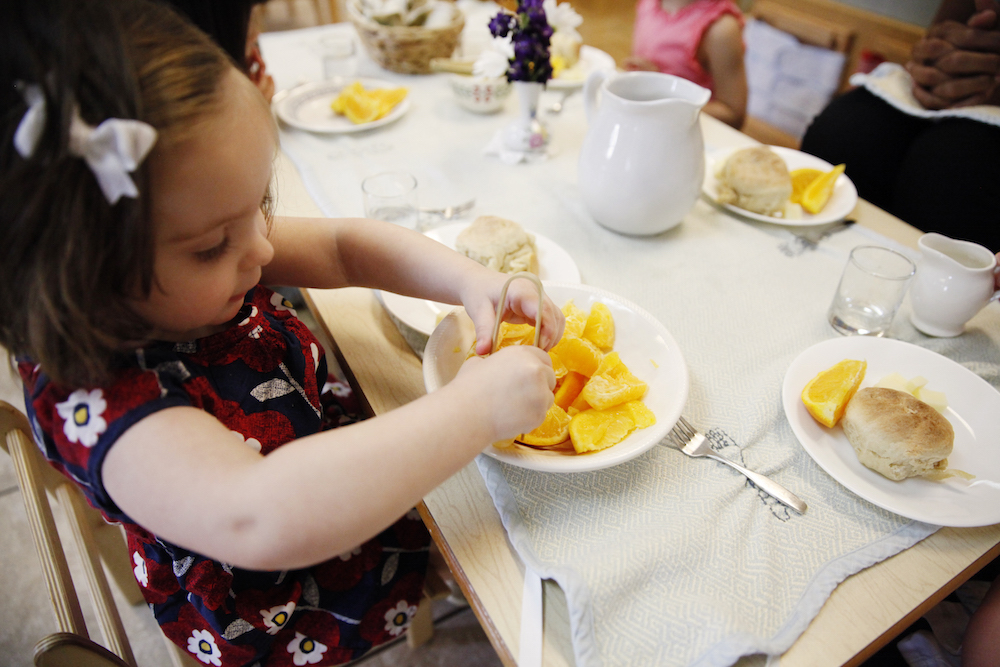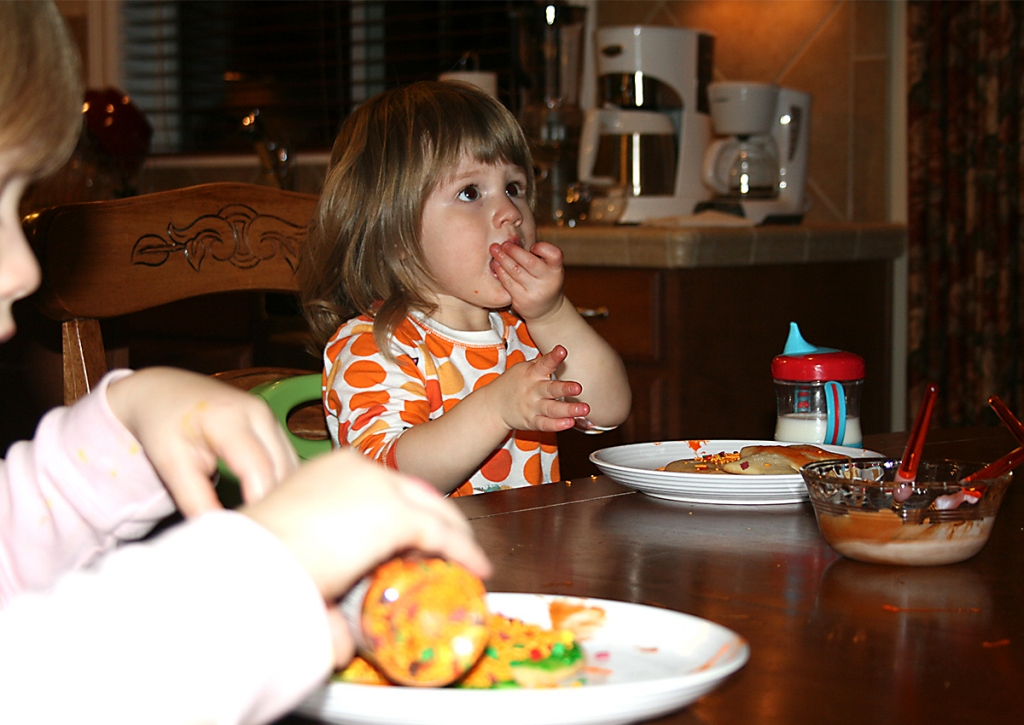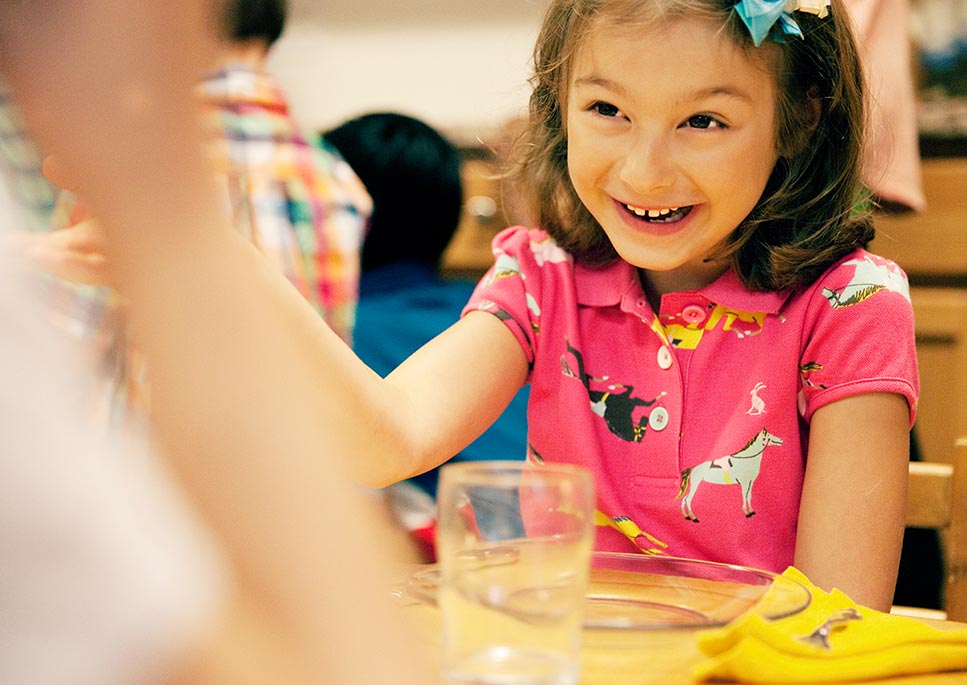#2 – Eat Dinner Together
How can you get your child ready for preschool? Unexpectedly, the answer is on the dinner table! Honestly, it was surprising to hear how serious our four expert child educators were about this.
For instance, one of our Toddler teachers said:
“Nothing can be more meaningful that sharing a meal with the family. Social customs, learning how to use the items necessary to eat with, civility and just being together is a gift that is fading away in our culture.”
Eating together as often as possible is important for the young child and the family. This is a time for the child to begin understanding how to have conversations, sit together and talk about his or her day. Beyond conversation, dinner time also teaches appropriate behavior at the table, manners, how to use utensils, etc. It develops expectation that you need to sit through the meal. It is a good way to develop bonds with each other, communicate feelings and to know what your child cares about or about things that may be bothering a child. It is important as they get older as well. A child should not have to get up several times while eating and should not have toys at the table.
How Serious is eating together for child development? Listen to this excerpt of an actual email one of our veteran teachers sends out to parents twice a year:
“I am pleading with each of you to make this a top priority in your home. I eat with the [classroom] children every day of the week for thirty minutes at a time and the majority of the class still lacks basic table etiquette… Our work at school is futile without your help at home. If you are not eating together as a family somewhat regularly, I am asking you to find a way to make it happen (at least four times a week). As I have said before, simply telling your children what to do during a meal is not enough, they need an adult model to lead the way.”

Just Do it! The Benefits are Incalculable

Yes, Eating Together is that Serious!

10 Easy Things You Can Teach While Eating Together
- STAYING SEATED UNTIL THE MEAL IS OVER (at least 25 minutes)
- Using utensils at every meal and distinguishing which food requires a utensil
- Offering food to the person next to you
- Appropriate conversation at the table
- Cutting with a fork and knife (I have a children’s catalog with silverware)
- Appropriate bite size (not eating off of the fork)
- Chewing with your mouth closed
- How to eat without getting food all over your face
- Considering others when serving yourself food
- Using a dustpan/brush and crumber to clean up after the meal is over
Start Early
Thirty minutes at the table is reasonable for a child under six.
It’s best to start eating together early in the child’s life
If you require this in the beginning the child will understand and expect what the family does at the table. You also have to set the rules (e.g., we stay at the table until everyone’s plates are clean or until they are excused). Set the rules, communicate the rules, follow through and be consistent.



Leave a Comment